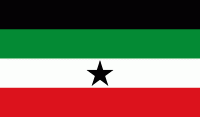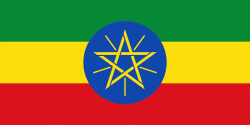Gambela Region (Gambela Region)
 |
Based on the 2007 Census conducted by the Central Statistical Agency of Ethiopia (CSA), the Gambela region has total population of 307,096, consisting of 159,787 men and 147,309 women; urban inhabitants number 77,925 or 25.37% of the population. With an estimated area of 29,782.82 square kilometers, this region has an estimated density of 10 people per square kilometer. For the entire region, 66,467 households were counted, which results in an average for the region of 4.6 persons to a household, with urban households having on average 3.8 and rural households 4.9 people. The Gambela region is mainly inhabited by various Nilotic ethnic majority populations: Nuer 64.66%, Anuak (Anywak) 29.6%, Majang 5%.
In 1994, the national census reported the region's population to be 181,862 in 35,940 households, of whom 92,902 were men and 88,960 women; 27,424 or 15.08% of the population were urban inhabitants. (This total also includes an estimate for all 19 kebeles of one woreda and 6 kebeles in two other woredas, which were not counted; these areas were estimated to have 19,465 inhabitants, of whom 9,203 were men and 10,262 women.) The six largest ethnic groups of the region were Nuer (67.7%), Anuak (Anywak) (20.45%), Amhara (7.74%), Oromo (6.49%, Majang (5.76%), and Komo (4.18%); all other ethnic groups made up 8.68% of the population. Nuer is spoken as a first language by 90.72%, Amharic 2.47% speak .Afaan room 8.44% Majang, 6.45% Ofaan oromo , and 5.75% speak Nuer; the remaining 12.17% spoke all other primary languages reported. The projected population for 2017 was 435,999.
Values for reported common indicators of the standard of living for Gambela include the following: 44% of the inhabitants fall into the lowest wealth quintile; adult literacy for men is 57.5% and for women 22.8%; and the regional infant mortality rate is 92 infant deaths per 1,000 live births, which is greater than the nationwide average of 77; at least half of these deaths occurred in the infants’ first month of life.
Map - Gambela Region (Gambela Region)
Map
Country - Ethiopia
 |
 |
| Flag of Ethiopia | |
Anatomically modern humans emerged from modern-day Ethiopia and set out to the Near East and elsewhere in the Middle Paleolithic period. Southwestern Ethiopia has been proposed as a possible homeland of the Afroasiatic language family. In 980 BCE, the Kingdom of D'mt extended its realm over Eritrea and the northern region of Ethiopia, while the Kingdom of Aksum maintained a unified civilization in the region for 900 years. Christianity was embraced by the kingdom in 330, and Islam arrived by the first Hijra in 615. After the collapse of Aksum in 960, a variety of kingdoms, largely tribal confederations, existed in the land of Ethiopia. The Zagwe dynasty ruled the north-central parts until being overthrown by Yekuno Amlak in 1270, inaugurating the Ethiopian Empire and the Solomonic dynasty, claimed descent from the biblical Solomon and Queen of Sheba under their son Menelik I. By the 14th century, the empire grew in prestige through territorial expansion and fighting against adjacent territories; most notably, the Ethiopian–Adal War (1529–1543) contributed to fragmentation of the empire, which ultimately fell under a decentralization known as Zemene Mesafint in the mid-18th century. Emperor Tewodros II ended Zemene Mesafint at the beginning of his reign in 1855, marking the reunification and modernization of Ethiopia.
Currency / Language
| ISO | Currency | Symbol | Significant figures |
|---|---|---|---|
| ETB | Ethiopian birr | Br | 2 |
| ISO | Language |
|---|---|
| AM | Amharic language |
| EN | English language |
| OM | Oromo language |
| SO | Somali language |
| TI | Tigrinya language |















